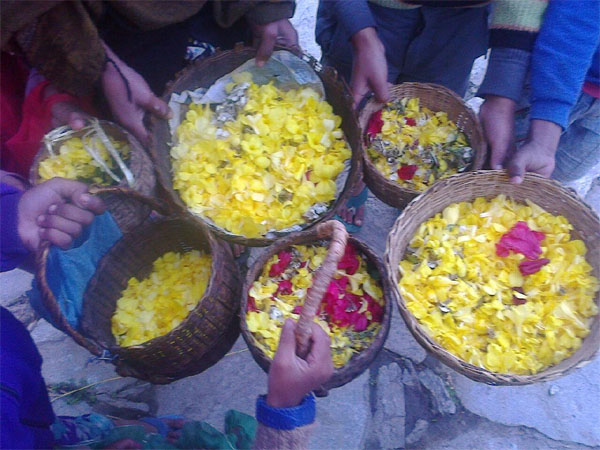
Phool Dei Festival
Known as the harvest festival of the state Uttarakhand, Phool Dei is an auspicious folk festival which welcomes the spring season in the state. The festival is celebrated on the first day of the Hindu month, Chaitra. Young girls are the most enthusiastic ones to participate in the festival. Phool Dei is all about flowers and springtime. In some places, the festival is celebrated as carnival and the celebration goes on for a month. The term 'Dei' refers to a ceremonial pudding which is the key food in this festival that is made from jaggery. White flour and curd are also offered to everyone.
Young girls gather together and go to every house in their village/towns with plates full of rice, jaggery, coconut, green leaves, and flowers. Moreover, these girls put forward their wishes for the prosperity and well being of households while singing "Phool Dei, Chamma Dei, Deno Dwar, Bhur Bhakar, Vo Dei Sei Namashkar, Puje Dwar." In return, they are presented with blessings and gifts like sweets, jaggery, and money.
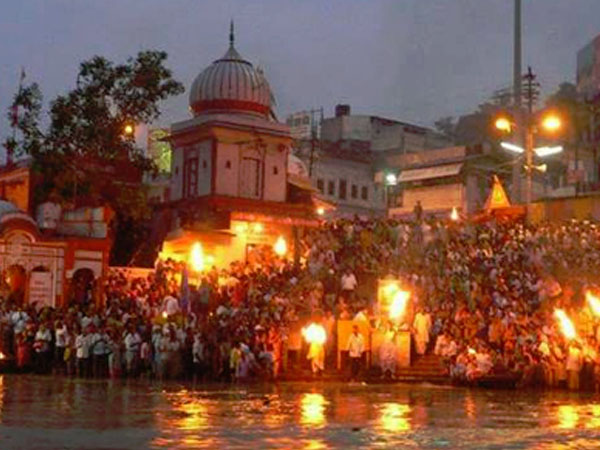
Ganga Dussehra Festival
Celebrated in the state of Uttarakhand, Ganga Dusshera or Dasar Festival is organized in the month of May-June. The festival is held for ten days where Ganga River is worshipped. As per Hindu mythology, on this day, the holy River Ganga descended from heaven to earth. This festival in Uttarakhand starts on the Amavasya night (waxing moon) of Hindu calendar and ends on Dashami tithi (10th Day).
An Aarti takes place on Ganga Dusshera which is held on the bank of the river in the popular pilgrimage destinations of Haridwar and Rishikesh. Ganga Dussehra is all about cleansing the soul by taking bath in the sacred River of Ganga. After taking bath people also meditate on the banks of River Ganges. In the evening earthen lamps are floated in the river along with the singing of devotional songs by the devotees.
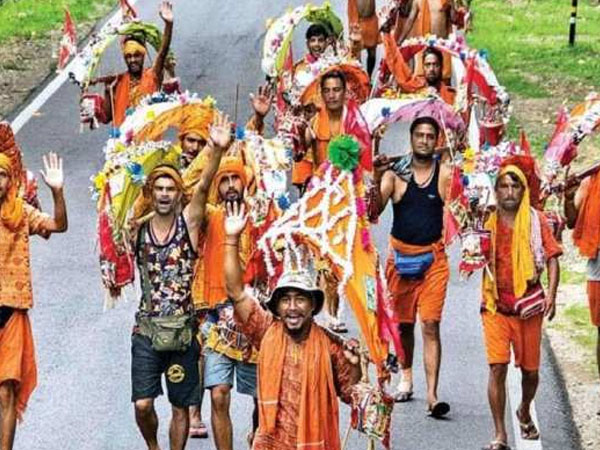
Kawad Yatra
With the onset of the Hindu month of Shravan (starts in mid-July) commences the sacred pilgrimage journey, Kawad Yatra in Uttarakhand and other parts of India as well. During this yatra, millions of devotees of Lord Shiva known as 'Kanwariya' from all states and cities of India make a journey to Haridwar, Gangotri, and Gaumukh in the state of Uttarakhand while chanting Bol Bam to gather sacred water from the River Ganga and carry it across hundreds of miles to offer it at their local or popular Shiva temples such as Pura Mahadeva and Augharnath temple in Meerut, and Kashi Vishwanath, Baidyanath, and Deoghar in Jharkhand. During the Kawad Yatra that starts in the monsoon months, the devotees of Lord Shiva even observe a fast on Mondays.
The devotees head to Haridwar, Gangotri, and Gaumukh in Uttarakhand while carrying a Kanwar on their shoulders. In these sacred places, the devotees take holy bath in the Ganga River. The water when carried back to their hometowns is used for bathing the Shivalingam on the Amavasya (New Moon) day in Shravan month or on the Maha Shivratri day.
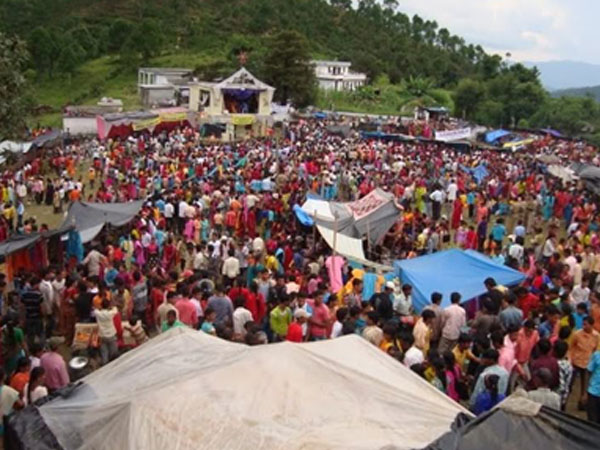
Bissu Mela
Revel in the warm air of the festivities in Uttarakhand as the 'Land of Gods' welcome you to be a part of its widespread culture and traditions. Over the expanse of the whole land, you will come across a whole new and a diverse number of places, cultures, traditions and amiable festivities. One such Mela/Fair that is organized in the Chakrata Block of Dehradun District is Bissu Mela, celebrated by the Jaunsari tribe of Chakrata Tehsil. The Jaunsari community marks their presence in the Jaunsar - Bawar Region which has its close proximity to Himachal Border. When we look deep into the past events of history we find that the tribe has its origins from the Pandavas of Mahabharat.
The fair is widely celebrated over the period of a week in virtue of a good harvest season in Uttarakhand. As per the Hindu calendar, the Mela ushers amid the Shukla Paksha in the months of Chaitra. The main highlight of the Fair is that the locals from nearby villages and areas like Tehri, Uttarkashi, Saharanpur come together to laud and shower their love and affection on Santoora Devi, an incarnation of Goddess Durga.
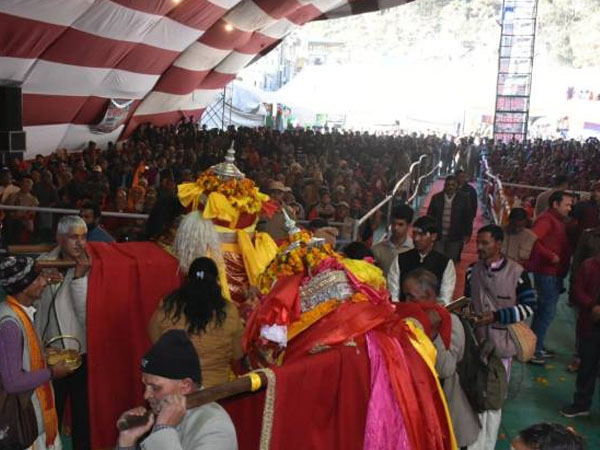
Magh Mela
Magh Mela is known to be one of the most popular fairs in Uttarkashi district in the Garhwal Region state of Uttarakhand. It is a religious and cultural fair that has now become an important tourism festival for the state. It is held in the Magh Month (January) and has fixed dates each year i.e, from 14 January (when the Makar Sankranti is celebrated) to 21 January. Dolis or palanquin, carrying deity of Kandar god and other Hindu gods and goddesses from various parts of Uttarkashi are brought on the first day of the fair to the Ramlila Ground at Uttarkashi through Pata-Sangrali Village.
During this fair, devotees from different places come for Ganga Snan( taking a dip in Ganga River). Magh Mela lasts for more than a week in which people from different parts of Uttarakhand display their local produce and handcrafted items. People spark up the commencement of this festival with the beating of drums in the town situated on the banks of Bhagirathi River.
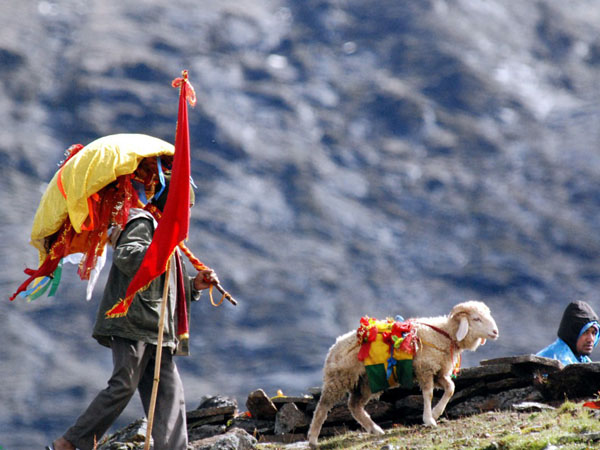
Nanda Devi Raj Jat
Nanda Devi Raj Jaat or Himalayan Mahakumbh is a festival in Uttarakhand in which Goddess Nanda Devi (also known as Gaura and Raj Rajeshwari in Garhwal division) is worshipped. Devotees from both Garhwal and Kumaon regions of the state of Uttarakhand along with other parts of the country participate in the sacred yatra. Goddess Nanda Devi is believed to be the consort of Lord Shiva and the daughter of the ruler of Mountains. As per the beliefs, Nanda Devi is an avatar of Goddess Parvati or considered as her sister. Moreover, the Goddess Nanda Devi is the foremost godhead of both Garhwal and Kumaon division of the state Uttarakhand.
This festival is held for whole three weeks and is organized once in every twelve years in the Chamoli District of Garhwal Region. Nanda Devi Raj Jaat Yatra is performed on a long route that takes almost twenty-two days to complete. Jat refers to Dev Yatra that describes the tales of the bonding of deities and devotees. The distance of this whole journey (yatra) is around 280 km. The sacred yatra begins from Nauti Village in Karanprayag of Chamoli district and ends in Roopkund, where hundreds of skeletons can be seen.

Kumbh Mela Haridwar
Haridwar in Uttarakhand is presented with the opportunity to hold one of the biggest gatherings of Hindu devotees in the world. Blessed with the presence of River Ganga, Haridwar and its ghats are opportune to organize the popular Kumbha Mela, Ardh Kumbh Mela, and Maha Kumbh Mela every 3, 6 and 12 years respectively. Millions of devotees from around the world come to take a dip in the holy water of the Ganges during this fair in Uttarakhand. Apart from Haridwar, Kumbh Mela is held in Nasik on the bank of River Godavari; Allahabad on the famous confluence of Ganga, Yamuna and Saraswati rivers and Ujjain on the bank of River Shipra.
According to Hindu Mythology, Haridwar is one of the four places where the elixir fell during the war between gods and demons, and this is why the land is considered blessed. Bathing in the water of River Ganga is symbolic to gaining immortality during the Kumbha Mela, and thus, a large number of believers indulge in this act of taking a dip in the river. A number of Akhadas participate in the Kumbha Mela, amongst which the Nagas are the one who get the opportunity to take the first bath.
